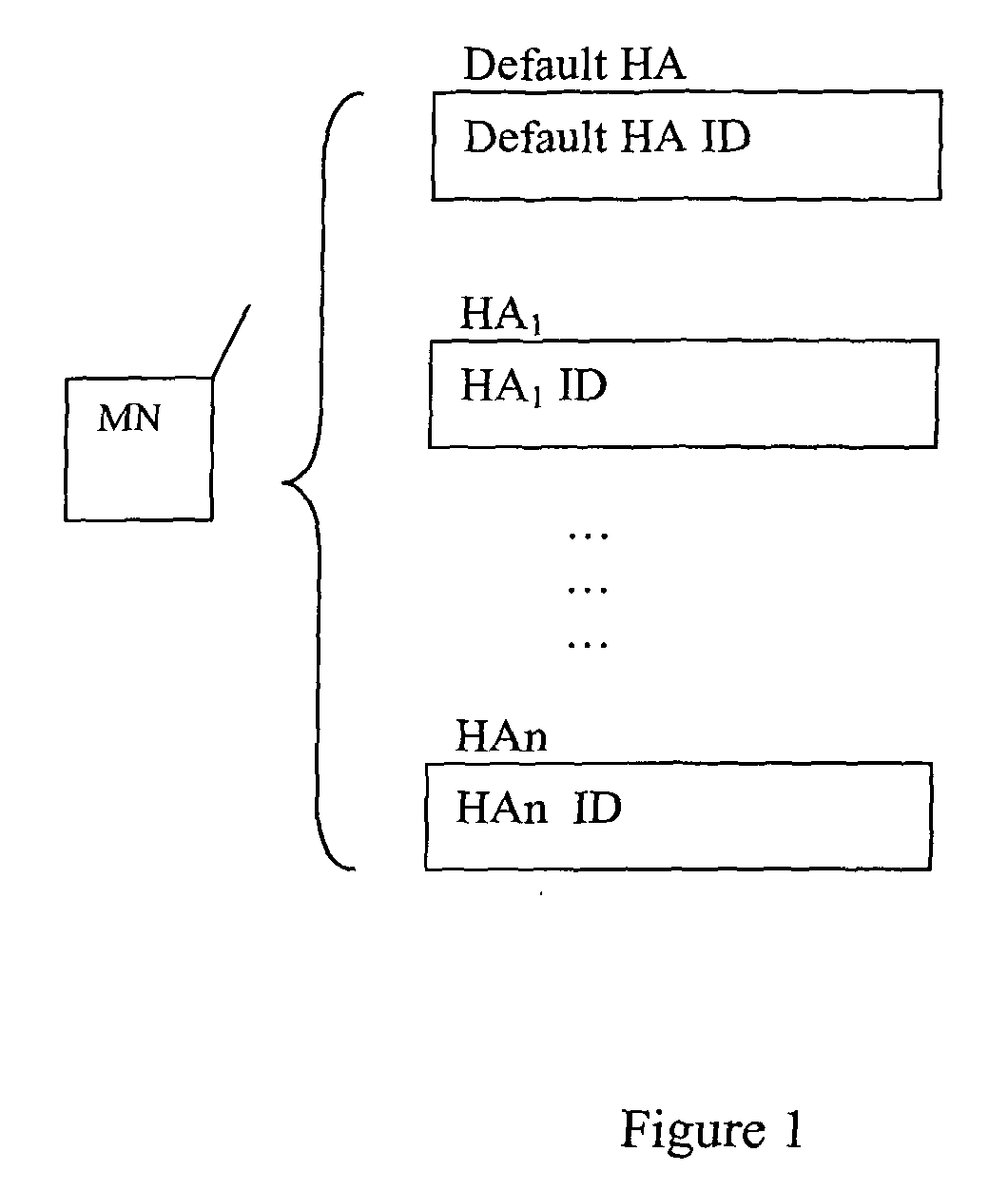Method for home agent location
a technology for home agents and cns, applied in the field of mobile communications, can solve the problems of adversely affecting the quality of real time applications running between the cns, the inability to communicate with a cn using its home address, and the increase of the end-to-end delay of the triangular routing between the mns
- Summary
- Abstract
- Description
- Claims
- Application Information
AI Technical Summary
Benefits of technology
Problems solved by technology
Method used
Image
Examples
1st embodiment
I-1ST EMBODIMENT
[0021]In the first embodiment, the MN stores the list of its HA partial FQDNs.
[0022]In this embodiment, it is required that the fully completed FQDN of the default HA is stored as the default HA ID. For every other HA, each HA ID is the partial FQDN of that HA.
[0023]Examples of partial FQDNs are:[0024]1. HA.vodafone.co[0025]2. HA.orange.co[0026]3. HA.docomo
[0027]To complete any partial FQDN, a last label that corresponds to a top-level domain label of the Domain Name System (DNS) tree is needed. The list of most Top Level-Domains currently used today can be found in [DNS and BIND”, Help for system administrators, 4th edition, Oreilly, Paul Albitz & Cricket Liu, pp 553-556].
[0028]This embodiment is intended to allow the MN to retrieve the correct label that will lead to the creation of a FQDN associated with the IP address of a HA in the vicinity of the MN. To this end we propose the introduction of a new set of top-level domain labels.
I-1 New Top-Level Domain Labels ...
PUM
 Login to View More
Login to View More Abstract
Description
Claims
Application Information
 Login to View More
Login to View More - R&D
- Intellectual Property
- Life Sciences
- Materials
- Tech Scout
- Unparalleled Data Quality
- Higher Quality Content
- 60% Fewer Hallucinations
Browse by: Latest US Patents, China's latest patents, Technical Efficacy Thesaurus, Application Domain, Technology Topic, Popular Technical Reports.
© 2025 PatSnap. All rights reserved.Legal|Privacy policy|Modern Slavery Act Transparency Statement|Sitemap|About US| Contact US: help@patsnap.com



